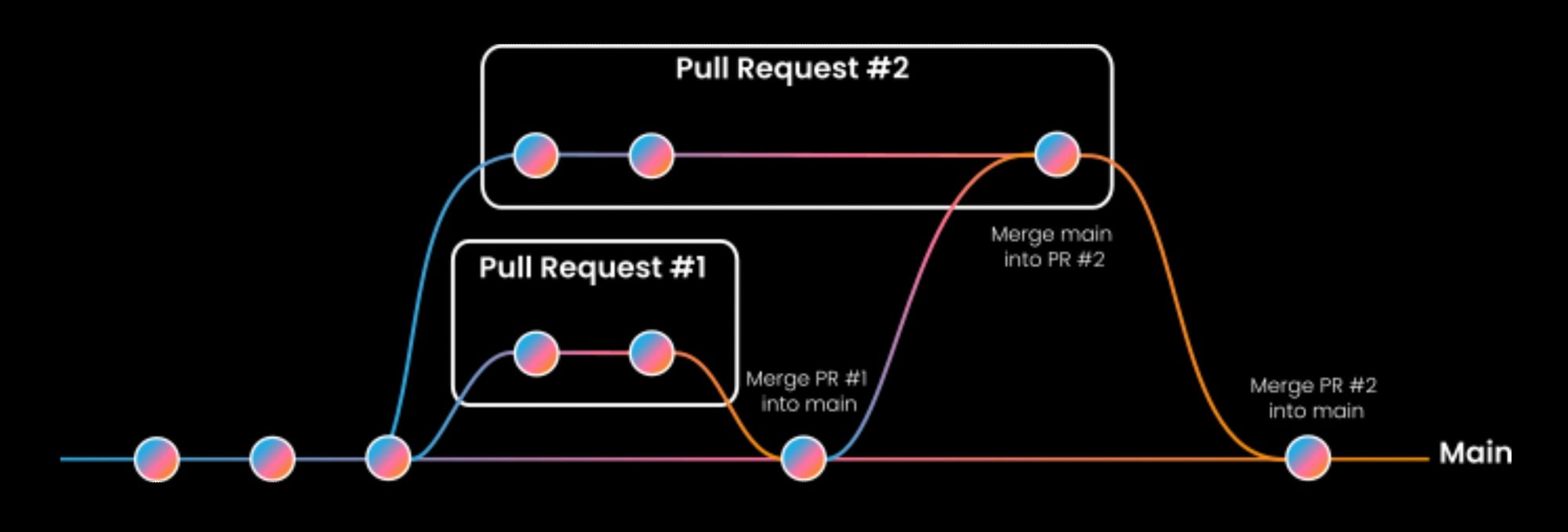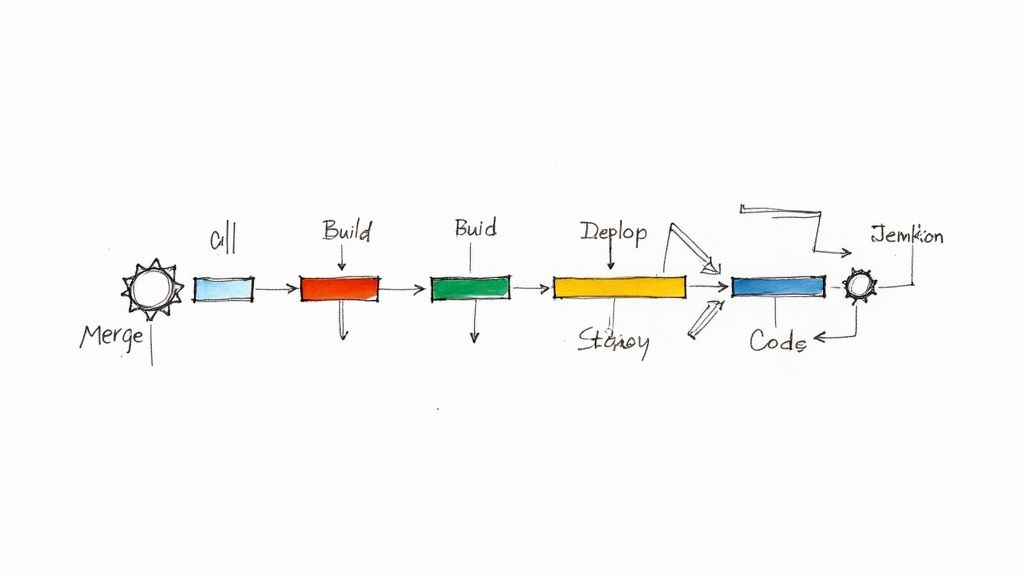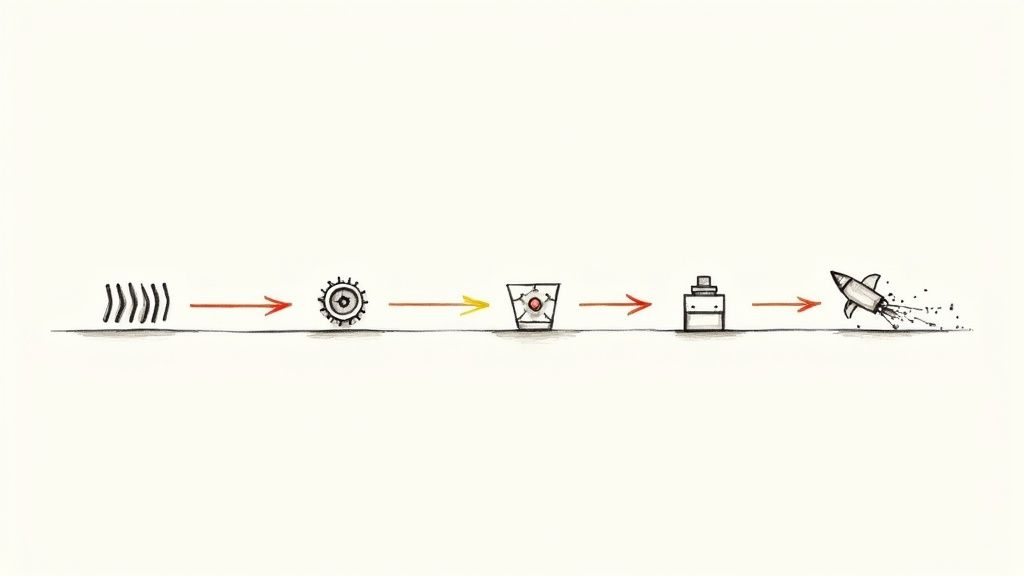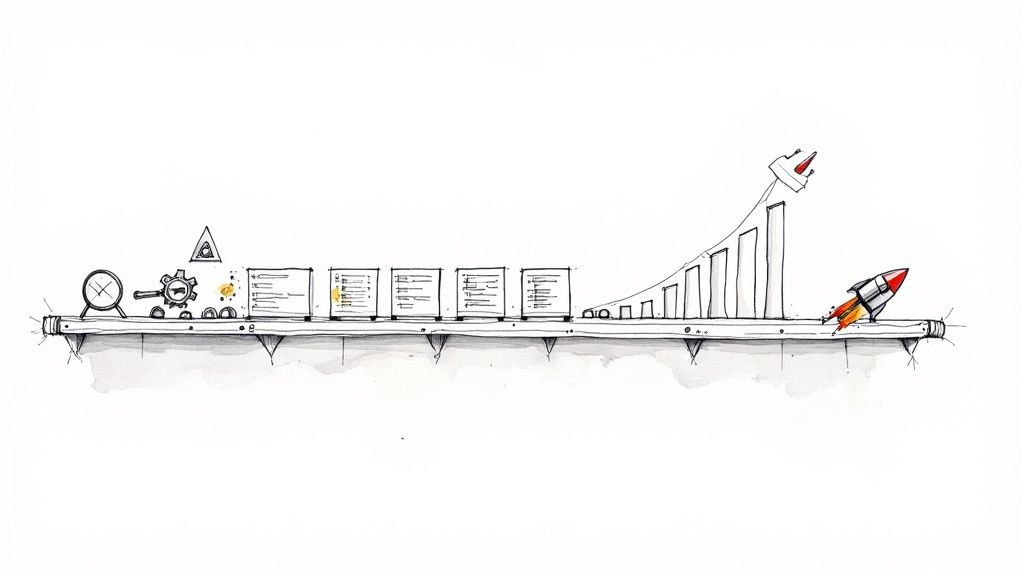Cycle Time and How to Optimize It

In today's fast-paced software development landscape, delivering high-quality software quickly and efficiently is more important than ever. To achieve this goal, teams need to measure and optimize their performance using metrics that provide actionable insights. The DORA metrics and the Accelerate book's four key metrics are widely recognized as useful tools for assessing and improving software development performance.
One of these key metrics is cycle time, which measures the time it takes to deliver a feature from start to finish. Cycle time is a critical metric for software development teams. It tells you, when combined with other metrics, whether you are providing value to your customers quickly, which is important to shorten the developer-user feedback loop and stay ahead of your competition.
We can divide cycle time into five sub-times: WIP time, pickup time, code review time, merge time, and deployment time.

In this blog post, we will explore the concept of cycle time in software development and discuss the key metrics that make it up. We will also share best practices for optimizing each of these metrics to help teams deliver software faster and more efficiently. By the end of this post, you will have a better understanding of how cycle time metrics can help you measure and improve your development process.
WIP Time
WIP time, or Work In Progress time, refers to the amount of time a task spends in progress but is not yet complete. For software development teams, reducing WIP time is critical for improving flow efficiency, minimizing context switching, and ensuring that tasks are completed as quickly as possible. Here are some best practices for reducing WIP time:
Break tasks into smaller pieces
By breaking down tasks into smaller, more manageable pieces, you can reduce WIP time and improve flow efficiency. Smaller tasks are easier to track, prioritize, and complete, which can help teams work more efficiently.
Have clear requirements
Clear requirements can help minimize rework and ensure that tasks are completed correctly the first time. By providing developers with tasks with clear requirements upfront, you can reduce the likelihood of misunderstandings or miscommunications that can lead to longer WIP times.
Use draft pull requests
Draft pull requests are an excellent way to reduce WIP time by enabling developers to get early feedback on their code. By creating a draft pull request early in the development process, developers can get feedback on their code before it's complete, which can help them identify and resolve issues more quickly.
Generative AI code tools
Consider using a generative AI code tool such as GitHub Copilot. These tools are improving every day and can be very helpful in automating the creation of repetitive code, such as boilerplate code or code that follows a specific pattern.
In addition to these best practices, it's also essential to regularly review your WIP time metrics and look for opportunities to optimize your process further. By continually measuring and improving your WIP time, you can reduce cycle time and deliver software more quickly and efficiently.
You can check these and other engineering metrics with tools like Pullpo.io, Swarmia or Athenian.

Pickup Time
Pickup time is the time it takes for a pull request to be picked up by a reviewer. Reducing pickup time is critical for ensuring that pull requests get reviewed quickly, which can help reduce cycle time and improve development efficiency.

Here are some best practices for reducing pickup time:
1. Define code owners
Code owners are individuals or teams who are responsible for reviewing and approving changes to specific parts of the codebase. By defining code owners, you can ensure that pull requests are assigned to the appropriate reviewers, which can help reduce pickup time.
2. Use automated reminders
Automated reminders can help reduce pickup time by reminding reviewers to review and approve pull requests. Tools like GitHub reminders on Slack can be used to send reminders to reviewers and ensure that pull requests are reviewed promptly.
Code Review Time
Code review time is the time it takes for a pull request to be reviewed and approved by a reviewer. Reducing code review time is essential for ensuring that changes are reviewed promptly and accurately, which can help reduce cycle time and improve development efficiency. Here are some best practices for reducing code review time:
1. Use Code Review Collaboration Tools
Code review conversations on GitHub or other remote repositories are slow, notification system is not the best and pull requests end up getting stale. Pullpo.io offers a tool that creates ephemeral Slack channels per pull request, so that code review conversations happen faster, having access to workflow notifications, new approvals, new commits… all in their dedicated channel.
2. Use Automated Tools
Automated tools can help reduce code review time by identifying some issues and errors automatically. Simple linting tools can save a lot of code review time. Also, more complex tools like Sonarqube, can help reviewers do a better job.
3. Set clear expectations
Setting clear expectations for code reviews can help reduce code review time and ensure that reviews are completed promptly and accurately. By providing reviewers with clear guidelines on what to look for during the review process, you can help ensure that reviews are completed quickly and accurately.
Merge Time
Merge time is the time it takes for a pull request to be merged into the main codebase. Reducing merge time is crucial for ensuring that changes are integrated into the codebase quickly and efficiently, which can help reduce cycle time and improve development efficiency. Here are some best practices for reducing merge time.
1. Use Automated Merge Tools
Automated merge tools can help reduce merge time by automatically merging changes into the main codebase. For example, Mergify is a popular tool that can be used to automate merge operations and reduce the time required for manual merges.
2. Use a Merge Queue
Merge queues automate pull request management and ensure you all your pull requests are up-to-date before being tested and merged thanks to automated rebases. Once your pull request is up-to-date with your main branch, the Mergify’s Merge Queue triggers your CI and runs all your tests. If all the checks pass, the pull request is then automatically merged.

3. Set Clear Expectations and Create an Ownership Culture
Setting clear expectations for merge operations can help reduce merge time and ensure that changes are integrated into the codebase promptly and accurately. By providing developers with clear guidelines on how to perform merge operations, you can help ensure that merges are completed quickly and accurately.
Deployment Time
Deployment time is the time it takes for changes to be deployed to production after they have been merged into the main codebase. Reducing deployment time is essential for ensuring that changes are deployed quickly and efficiently. Here are some best practices for reducing deployment time:
1. Use Continuous Deployment
Continuous deployment is a software development approach where changes are deployed to production as soon as they are merged into the main codebase.
2. Automate Deployment Processes
Automating deployment processes can help reduce deployment time by eliminating manual tasks and reducing the risk of errors. For example, using infrastructure as code tools such as Terraform and Ansible can help automate deployment processes and reduce the time required for manual deployments.
CONCLUSION
Cycle time is a critical metric for software development teams as it measures the time it takes for changes to go from idea to production. By optimizing various metrics that make up cycle time, such as WIP time, pickup time, code review time, merge time, and deployment time, teams can deliver software faster and more efficiently.
By implementing these best practices, teams can reduce cycle time, improve development efficiency, and deliver software more quickly and reliably. It's also important to regularly measure and optimize cycle time metrics to ensure that the development process continues to improve over time. With a focus on cycle time optimization, software development teams can deliver value to customers faster and stay ahead in an increasingly competitive market.





